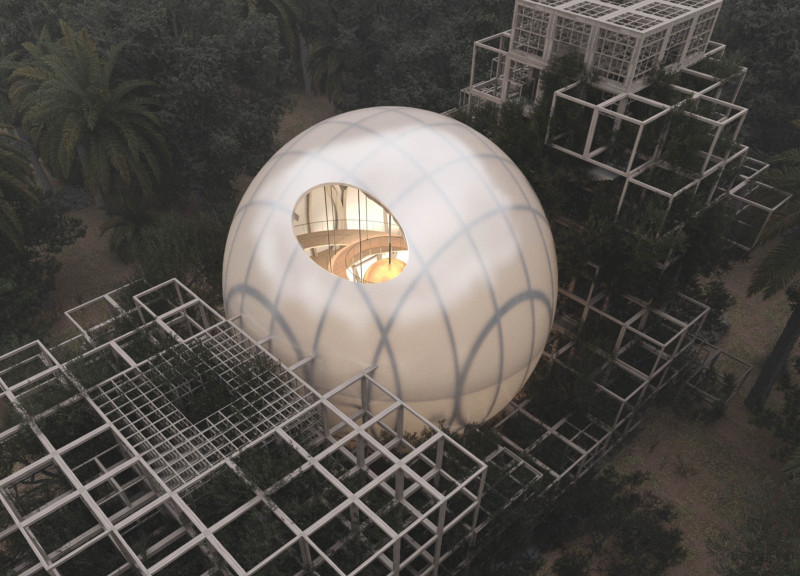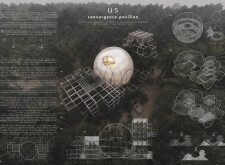5 key facts about this project
The architectural design is located between Valladolid and Chichen Itzá in Yucatán, Mexico, and reflects a deep human desire to create a lasting legacy. This project emerges within a region rich in history, acting as a bridge between the present and future. The concept centers on adaptation, encouraging a meaningful relationship between people and their environment. It addresses how architecture can express collective memory while remaining relevant across different generations.
Geometric Forms and Spatial Configuration
At the core of the design are two shapes: the square and the circle. These forms symbolize symmetry, proportion, and harmony. They guide the overall design language and influence the way space is organized. Each area is deliberately connected, creating a flow that allows for easy movement and interaction. Visitors can explore various spaces that offer both intimacy and openness, enriching their experience as they navigate through.
Materiality and Aesthetic Intent
Material choices are intentional and reflect the surrounding environment. A translucent skin wraps around the central sphere, inviting light to enter while protecting the interior. This feature creates a sense of continuity and transformation, as the pavilion engages with changing natural conditions. Timber is also used strategically, linking the structure to the landscape. It helps foster a relationship with local vegetation, softening the divide between nature and built space.
Programmatic Organization and Visitor Experience
The layout consists of both interior and exterior elements, enhancing how visitors engage with the site. A lobby serves as the entry point, guiding people up a vertical pathway that leads to two galleries and a large open exhibition hall. This journey ends at the CORE, a central sphere filled with knowledge focused on understanding humanity. The organization of spaces promotes an intuitive experience while encouraging exploration and reflection.
Public Integration and Community Space
Outside, cubic structures define areas that invite public interaction and community involvement. The exterior shell houses studios for various creative activities and features an observation point that offers a panoramic view. A network of stairs and pathways connects these functions, making movement fluid and natural. Additionally, a smaller volume holds a cafeteria and dining area, providing social spaces that enhance the visitor experience.
Attention to detail marks the design, where each element contributes to a strong connection with the surrounding environment. The careful arrangement of spaces allows the architecture to engage with its historical and cultural context, creating opportunities for visitors to appreciate both the landscape and the human experience it embodies.



















































